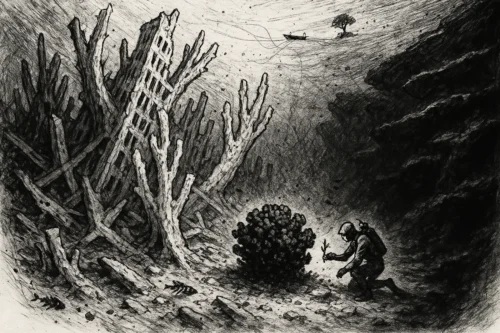Environment
-
Mushrooms as Bricks: Kenya’s Quiet Fungi Revolution in Sustainable Housing
TLDR: A Nairobi startup is turning two million tons of Kenya’s annual farm waste—maize cobs, coffee husks—into low-cost, carbon-negative wall panels that grow in five days, insulate so well they cut energy bills 15–20 %, and compost back to soil in 45 days, already roofing student rooms that stay 5–7 °C cooler while costing one-third… read more
-
Coral Reefs Just Crossed Earth’s First Climate Tipping Point—But the Comeback Story Starts Now
TLDR: Coral reefs have already passed their climate tipping point at 1.4°C warming, with 84% of global reefs experiencing bleaching-level heat stress between 2023-2025—the most intense global event ever recorded. While large-scale recovery is unlikely, scientists are discovering resilient deep-water refuges, developing heat-tolerant coral nurseries, and identifying molecular markers that predict survival, offering fragmented hope… read more
-
Coral Reefs Crossed a Tipping Point—How That’s Quietly Shifting Coastal Home Values
TLDR: Warm-water coral reefs crossed a critical climate tipping point in 2025, with widespread mortality now underway from global warming exceeding 1.3°C above preindustrial levels (Stockholm Resilience Centre, 2025). This weakens their role as natural storm barriers—reefs can slash up to 97% of wave energy—prompting insurers to double premiums, withdraw coverage, or pilot reef-specific policies.… read more
-
How a Pacific Typhoon’s Ghost Flooded Remote Alaska
TLDR: A monster typhoon’s remnant, born in the warm Pacific, traveled thousands of miles to slam remote Alaskan villages with water levels more than five feet above normal. How? The storm shapeshifted, swapping its tropical engine for an Arctic one fueled by clashing air masses. But this time, three under-the-radar factors supercharged its punch: unusually… read more
-
Why PFAS-laced tree swallows aren’t crashing—and what that ‘resilience’ really means
A new Oct 2025 field study finds no measurable reproductive harm. Here’s how to read that without declaring PFAS “safe.” TLDR: A new October 2025 Environmental Toxicology and Chemistry field study reports that tree swallows exposed to high PFAS levels didn’t show measurable reproductive harm—cue the “wait, what?” moment. Here’s why field results can diverge… read more
-
To Save Dying Coral Reefs, Scientists Are Giving Them a Jolt
TLDR: Running a gentle electrical current through underwater steel frames triggers limestone growth that helps corals thrive—often 2–6 times faster—and survive heat stress that kills neighbors, but only if the power stays on and conditions are right. Scientists are zapping coral reefs with electricity. Not with lightning-bolt theatrics, but with a steady whisper of power—4… read more
-
The Reef That Wires Itself: Inside the Quietly Electrified Comeback of Corals
TLDR: A technology called Biorock uses low-voltage electricity (typically under 12 volts) to trigger mineral accretion on underwater metal frames, creating limestone-like substrates where corals grow three to five times faster than normal—with some Indonesian trials showing 20-fold increases in length. During the catastrophic 1998 Maldives bleaching event, corals on solar-powered electrified reefs survived at… read more
-
The Plan to Save Coral Reefs Involves a Car Battery’s Worth of Electricity. Seriously.
TLDR: Biorock technology uses safe, low-voltage electricity to grow limestone structures underwater, accelerating coral growth 3-5 times and boosting heat resistance. Solar-powered projects from Indonesia to the Caribbean prove it works for localized restoration. But high costs, energy constraints, and logistical nightmares mean it’s not a planetary-scale fix—at least not yet. Somewhere off the coast… read more
-
Plug In a Reef, Grow a Rock: How Electricity Might Help Corals Outrun Climate Stress
Picture a scientist attaching jumper cables to a coral reef. Sounds absurd, right? But running a gentle electric current through underwater structures to help coral grow faster is not only real—it's been quietly working in tropical waters for over three decades. The question isn't whether it works in some places; it's whether this curious technology… read more






